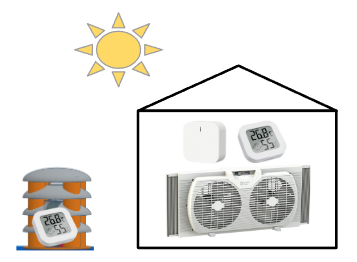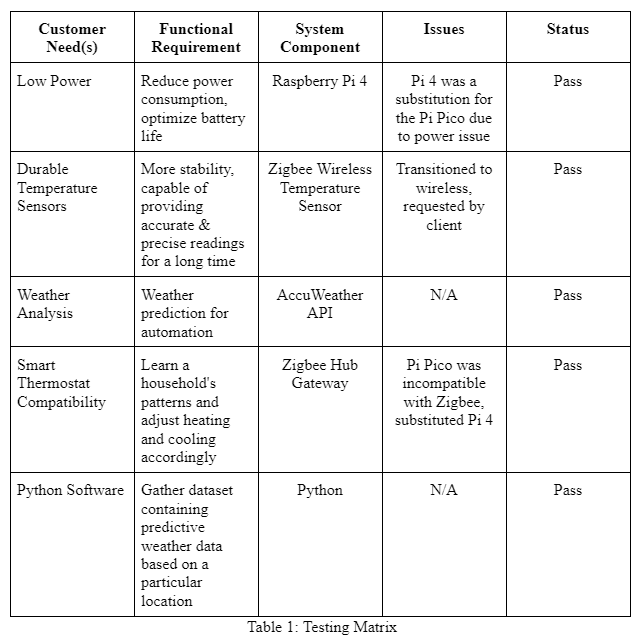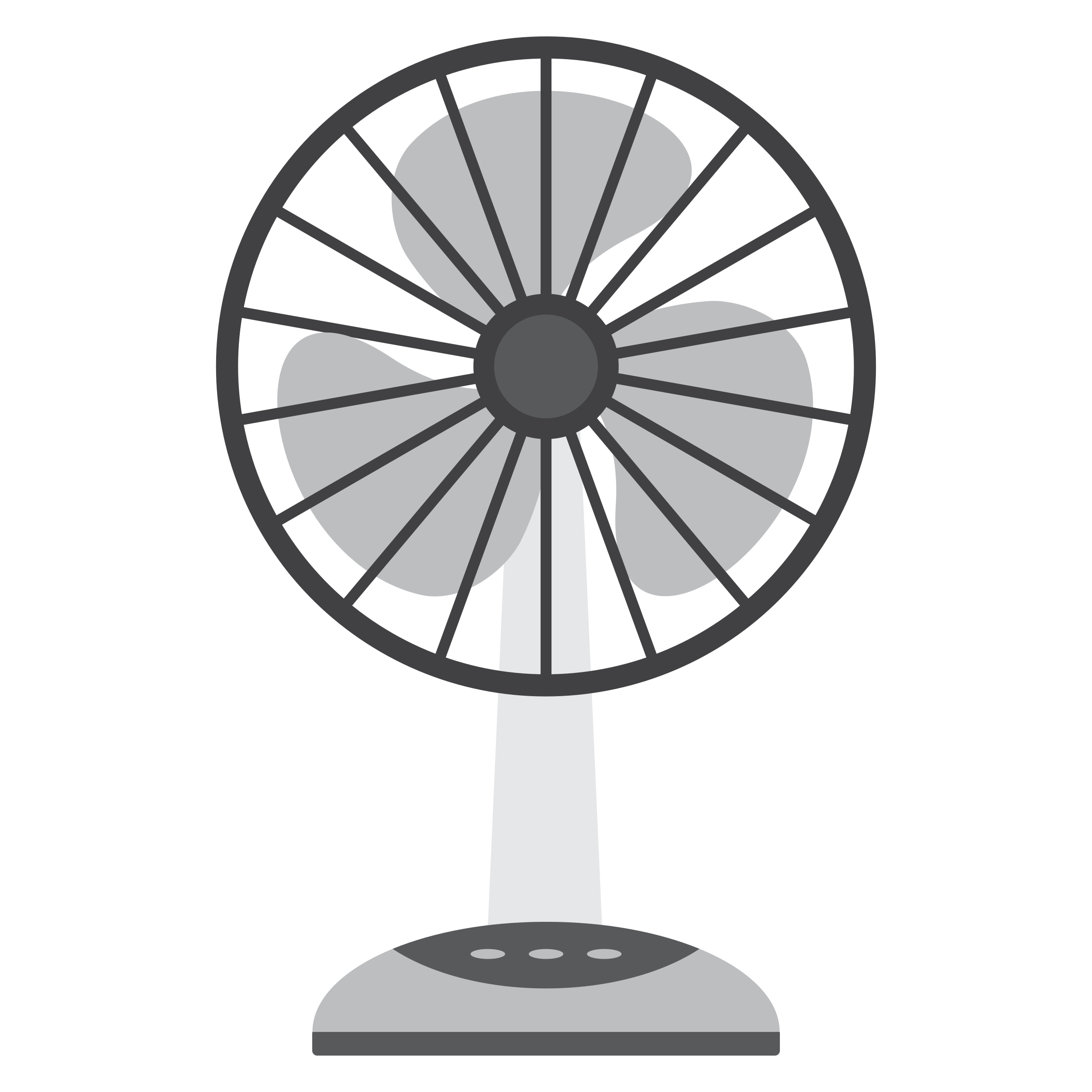Testing & Results
SmartFan would work in the following sequential order:
1) Sets a desired temperature (say, 70°F).
2) Sensors monitor indoor/outdoor air temperature.
3) When indoor temperature has not yet reached 70° and outdoor temperature exceeds indoor temperature, SmartFan will turn on its fans, thereby bringing outside air in and heating the house. Or vice versa with a cooler desired temperature, the fan will bring cool air from outside to chill the house.


On the left is our testing matrix that contains our customer needs, its functional requirements, system components, and status. This matrix helps us analyze the progress and testing to ensure we are fulfilling the requirements.
On the right is our results over a 4-hour period. We have the top measurement, which depicts when our relay turns off and on during that period. The bottom graph shows temperature measurements from the inside and outside temperature sensors. We set the desired temperature to about 72 degrees Fahrenheit. At the start of the period, we moved the sensors around a lot to see the difference in data. After 3:00PM, it is prevalent that the outside temperature rises and the fans activate periodically to bring the inside temperature down. Near 4:00PM, the outside temperature spiked due to the temperature sensor sitting in direct sunlight. We transferred the sensor into our 3D printed Stevenson shield which regulated the readings proving its effectiveness.

